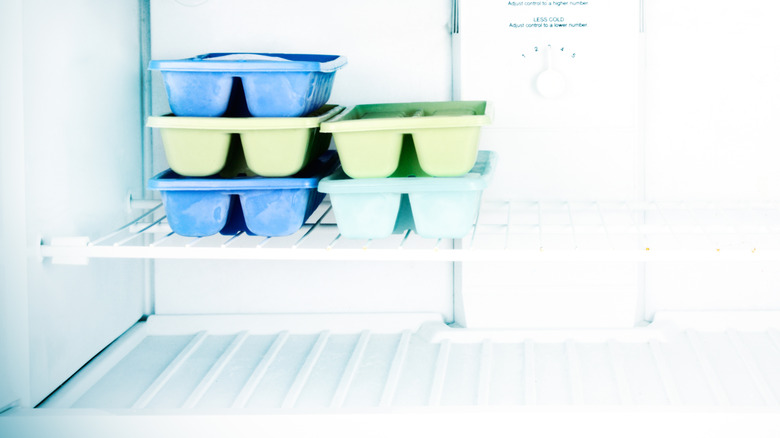The Science Behind Why Freezers Have Those Ridges Along The Bottom
Of all the culinary wonders in the world, few have confused owners of modern-day appliances like the ridges that line the bottom of a freezer. Not even the question of how often you should really clean your freezer has captivated our imaginations the way those lines have. If you've never noticed, there are a series of thick, white bumps that run along the inside floor of your icebox. If you are among the contingency who has seen a particular hack on social media and think it is for upright stacking of those foam trays that grocery stores use for packaging pork chops, chicken, and ground beef, you may want to phone a friend. While seemingly clever and practical, that is not the right answer.
The real reason those ridges exist may surprise you, but refrigerator engineers build these appliances based on science and know what they are doing. The ridges allow for the efficient circulation of cold air, creating a more consistent temperature. This is essential because unlike a fridge where you have lots of flat surfaces and the cool air is moved by way of vapor compression, freezers are much colder and use vacuum insulation to prohibit condensation. If the floor surface of a freezer was flat like a pancake, the air couldn't move around properly. This would result in condensation buildup causing the food packaging to stick like cement to the bottom of your freezer.
Keep it frost free
The ridges don't work alone. They get some help with airflow from air vents. Between the two, the air is able to move freely in your freezer. This becomes increasingly important when you place that warm, leftover casserole in the freezer or even those frozen fish sticks that just came from the store. The freezer needs to cool itself back to its normal temperature and if either is impeded, your food freezing endeavors may take a bad turn.
If the ridges are obstructed with a frost build-up that looks like you can go sledding, your freezer becomes a perfect breeding ground for humidity. Ice crystals will form on the food you are trying to preserve leading to the dreaded freezer burn. The end result is a change in taste and texture that you will discover when you are ready to prepare it to eat. And while freezer-burnt meat is safe to eat, it isn't exactly tasty. This may have you wondering how often you should clean your freezer so your ridges can do their job, and the answer is about every three months. You may need to do so more frequently if you find the bottom coated in frost on a regular basis.

